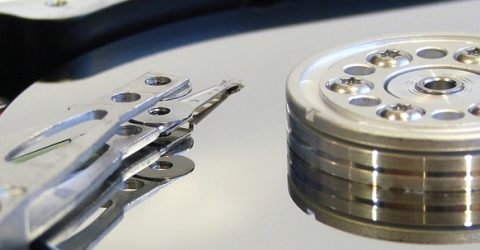Essential attributes in a new computer

If you thought hard drives and desktop monitors would be obsolete by the third decade of the 21st century, prepare to be surprised.
In 2018, 95 million desktop computers were sold worldwide. That’s 60 million units less than in 2010, but it’s still impressive in a world supposedly dominated by smartphones and tablets.
Globally, 162 million laptops found new homes last year, which actually represents an increase on the figures for 2016 and 2017.
It seems our love affair with full-sized keyboards and LCD screens isn’t over yet.
The same, but different
HP, Lenovo and Dell logos are attached to over 60 per cent of new computers sold around the globe.
Acer, Asus and Apple each hold around six per cent of the market, and a plethora of specialist builders and niche brands complete the sales charts.
Market domination by six companies has inevitably produced some fairly homogenous hardware, but buying a new computer can still be a strange, mysterious process.
Since Apple devices use a different operating system to other hardware manufacturers, it’s difficult to draw direct comparisons between OS X machines and Windows-powered devices.
(Of course, many people wouldn’t even consider buying a PC over a Mac, or vice versa).
With so much industry jargon and proprietary terminology, it’s often easier to draft up a bullet-point checklist of key requirements in your next desktop or laptop.
These are our key specification guidelines when buying a new computer…
Operating system. With all due respect to the fiercely patriotic Linux community, there are three main operating systems, appealing to subtly different markets.
Google Chrome is ideal for web browsing and light duties. Mac OS X is beloved by creatives and brand snobs, while Windows 10 is better suited to gaming and corporate environments.
Processor. CPU performance is measured according to its clock speed, and modern software generally requires a processor running at 2.4GHz or above.
Quad-core processors perform more effectively than dual-core versions, but they’re also pricier.
Graphics chip. If you’re not buying a new computer with ambitions of becoming a serious gamer, an integrated graphics chip will be perfectly adequate.
If you’re planning to run MMORPGs or first-person shooters, look for an AMD or Nvidia graphics chip launched in the last couple of years. (You’ll also want to get set up with low-latency broadband for gaming online).
RAM. Random Access Memory determines how many functions a computer can perform at any given moment, such as running multiple programs at once.
While 4GB will suffice for web browsing on a Chromebook, we’d suggest 8GB for media streaming, and 16GB if you’re buying a new computer to edit photos/videos/music.
Desktop monitor size. Computers are often sold as standalone towers or complete hardware bundles, though Apple favour all-in-one machines.
Larger screens tend offer superior ergonomics, with a lower risk of causing eyestrain or headaches. A desktop screen should measure at least 23 inches from its opposite corners.
Laptop monitor size. Bigger isn’t necessarily better here, since portability and weight are key attributes of laptops – the latter ideally coming in under six pounds.
A 13-inch screen will suffice if it supports 1920 x 1080 resolution, though 15 inch displays are optimal for split-screen activities or gaming.
Storage. This is where all your files, folders and programs are stored, and bigger is certainly better on this occasion.
Desktop HDDs should be at least 1TB nowadays, while the more portable SSD storage in laptops ought to be 500GB or above in capacity. Again, Chromebooks will be far smaller.
Camera. Given our reliance on webcams for video calling, decent laptops now contain integral cameras for selfies and Skyping.
Anything over 1200 x 960 pixels will support streaming and gaming, though a higher pixel resolution could benefit anyone planning to attend a lot of video conferences.
Ports. As a general rule, modern computers need at least one HDMI port, a few USB 3.0 sockets for peripherals and an Ethernet connector for hardwiring to your router.
Many people plug laptops into desktop docking stations, which bristle with port connections. Desktops are immovable, so a large number of unused ports is more valuable here.
Battery life. This only relates to laptops, since desktop computers are mains powered.
We’d suggest a minimum of six hours battery life, enabling you to use the laptop constantly on a train from London to Newcastle and back.






